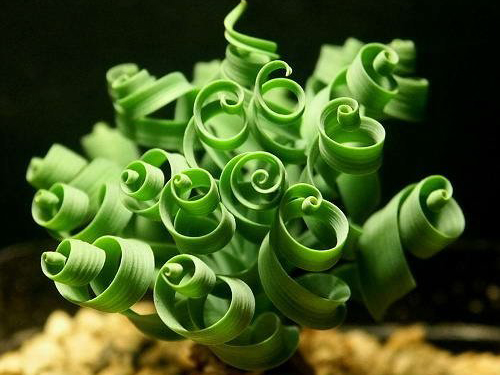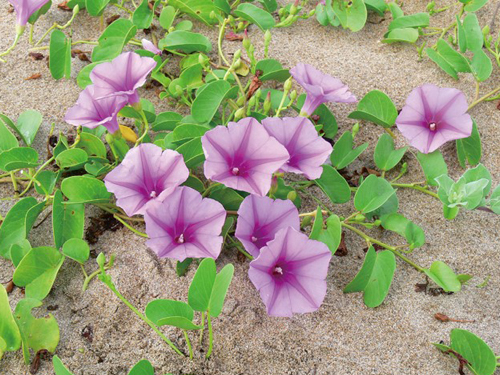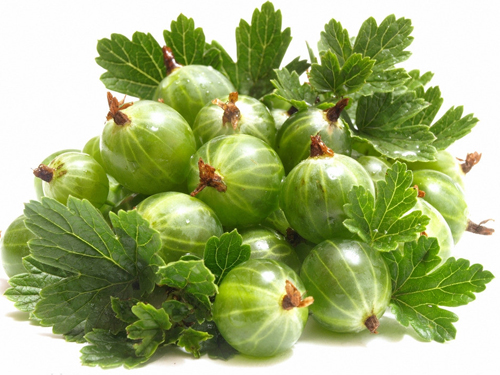What are the indoor foliage plants and the characteristics of indoor leafy plants
Indoor foliage plant is a kind of plant which mainly takes leaves as the key ornamental object and is suitable for indoor display and ornamental for a long time. Indoor foliage plants are mainly shady foliage plants, including some leaves, flowers and common appreciation of leaves and fruits, among which some hanging vines, such as green pineapple, are also often used in indoor foliage plants. This kind of plant has the following characteristics:
1. Most of them are native to the lower layers of tropical forests, so they like sufficient scattered light and fear direct light, and like warm to high-temperature climate and high-humidity environment.
2. it has a long viewing period and a wide variety of species, but families and genera are very concentrated, mainly belonging to Araceae, tequila, bamboo taro, palmitaceae, pineapple family and so on. Classification:
They can be divided into 4 categories according to their shade tolerance.
Shade-tolerant indoor foliage plants: such as ferns,-leaf orchids, Douban green, hulk, Guangdong evergreen and so on. It is suitable to be placed indoors near the window without direct light or far away from the window with direct light.
Semi-shade-tolerant indoor foliage plants: such as bamboo taro, forest taro, green apple, flower and leaf cold water spray, tortoise back bamboo, asparagus, loose-tailed sunflower, hanging orchid, brown bamboo and so on. It is suitable to be placed in places with light but no direct light, such as indoors around the south window from 1.5 to 2.5m.
Japanese-neutral indoor foliage plants: such as fish-tail sunflower, goose palm wood, Malaba chestnut, Brazilian iron, Australian duck feet, dragon spit beads, plantains, African violets and so on. It is suitable to be placed in places where there is some direct sunlight, such as near the east window and west window and 0.8m away from the south window.
Xiyang indoor foliage plants: such as weeping leaf banyan, rubber banyan, variable leaf banyan, colored leaf pineapple and so on. It is suitable to be placed in the atrium with skylight, or in the room about 0.5-0.8m from the south window.

What are the characteristics of indoor foliage plants
For indoor foliage plants, it can only be said that there are really many. Some foliage plants with good meaning, easy to feed and absorb harmful substances in the air are widely planted in life and become what we call common plants. What is an indoor foliage plant? Let's take a look at it together.
What are the indoor foliage plants?
1. Red-backed taro
Red-backed bamboo taro, also known as red-backed lying-flower taro, purple-backed bamboo taro, is a perennial evergreen herbaceous foliage plant of the family Taro. Red-backed taro is one of the most popular cultivated species in the family of bamboo taro. It has dense branches and leaves, plump plant shape, thick green and bright leaves and purplish red on the back, forming a sharp contrast. It is an excellent indoor shady foliage plant. Used to decorate the bedroom, living room, office and other places, appear quiet and dignified.
2. Spotted leaf taro
Zebra leaf taro, also known as velvet taro, zebra taro, velvet leaf taro, is a perennial evergreen herbaceous foliage plant of the family Amorphophallus. Amorphophallus variegata leaves are broad, soft, mottled and gorgeous luster, and very rich in soft and elastic beauty, the ornamental effect is very good, is a world-famous shade-loving foliage plant. Potted plants are suitable for decorating study, living room or indoor garden. In a bright room, it can grow well without direct sunlight, which can be enjoyed for a longer time. Its leaves can also be used as flower arrangement and matching leaves.
3. Alpinia angustifolia
Alpinia officinarum, also known as alpinia officinalis, is a perennial herbaceous foliage plant of the family Zingiberaceae. The flowers and leaves of alpinia angustifolia are gorgeous and charming; the flowers are graceful and fragrant, so they are very valuable indoor plants for viewing leaves and flowers. It is often planted in small and medium-sized pots, placed in brighter places such as living rooms, offices and hall aisles, and can also be used as indoor gardens to decorate plants.
4. One-leaf orchid
The orchid is tall and straight in shape, bright and green in color, graceful, elegant and graceful; at the same time, it is strong, adaptable and extremely shady, so it is an excellent shade-loving foliage plant for indoor greening and decoration. It is suitable for home and office layout. Can be watched alone; can also be arranged with other flowering plants to set off the freshness and beauty of other flowers. In addition, it is also an excellent leaf material for modern flower arrangement.
5. Tiger tail orchid
Tiger tail orchid, also known as tiger skin orchid, thousand-year-old orchid, is a perennial herbaceous foliage plant of Liliaceae. The leaves are firm and erect, with gray-white and dark green tiger-tail stripes, resolute posture, strange and interesting; it has many varieties, great changes in plant shape and leaf color, exquisite and chic; it has strong adaptability to the environment, and is a kind of tenacious plant. It is widely cultivated and widely used, and it is a common potted foliage plant at home. It is suitable for decorating study, living room and office, which can be enjoyed for a long time.
6. Dutch Iron
Dutch iron, also known as giant silk orchid, elephant silk orchid, unthorn silk orchid, is a foliage plant of the genus Liliaceae. The iron plant is regular in shape, the stem is stout, and the leaves are firm and green, full of masculine and upright temperament. It has strong adaptability, exuberant vitality, simple cultivation and management, and is a kind of plant with strong absorption capacity to many kinds of harmful gases, so it is an ideal material for indoor and outdoor greening and decoration. Make small and medium-sized potted plants, decorate conference rooms, halls, hallways and other places, can create a solemn, serious atmosphere; potted young plants are also very popular on bookshelves and desks.
Finally, I have to say that the indoor foliage plant is a favorite decoration plant for many people, especially in the office and courtyard, which is both beautiful and environmentally friendly.
What are the indoor foliage plants, the characteristics and classification of indoor foliage plants? indoor foliage plants are a kind of plants which mainly take leaves as the key ornamental object and are suitable for long-term indoor display and ornamental. Indoor foliage plants are mainly shady foliage plants, including some leaves, flowers and common appreciation of leaves and fruits, among which some hanging vines, such as green pineapple, are also often used in indoor foliage plants. This kind of plant has the following characteristics: 1. Most of them are native to the lower layer of tropical forest, so they like sufficient scattered light and fear direct light; they like warm to high temperature climate and high humidity environment. 2. it has a long viewing period and a wide variety of species, but families and genera are very concentrated, mainly belonging to Araceae, tequila, bamboo taro, palmitaceae, pineapple family and so on. Classification: according to shade tolerance, it can be divided into four categories: shade-tolerant indoor foliage plants, such as ferns, orchids, bean green, hulk, Guangdong evergreen and so on. It is suitable to be placed indoors near the window without direct light or far away from the window with direct light. Semi-shade-tolerant indoor foliage plants: such as bamboo taro, forest taro, green apple, flower and leaf cold water spray, tortoise back bamboo, asparagus, loose-tailed sunflower, hanging orchid, brown bamboo and so on. It is suitable to be placed in places with light but no direct light, such as indoors around the south window from 1.5 to 2.5m. Japanese neutral indoor foliage plants: such as fishtail sunflower, goose palm wood, Malaba chestnut, Brazilian iron, Australian duck foot wood, dragon spit bead, Zhu banana, African violets and so on. It is suitable to be placed in places where there is some direct sunlight, such as near the east window and west window and 0.8m away from the south window. Xiyang indoor foliage plants: such as weeping leaf banyan, rubber banyan, variable leaf wood, colored leaf pineapple and so on. It is suitable to be placed in the atrium with skylight, or in the room about 0.5-0.8m from the south window. Culture methods: (1) adaptation process the foliage plants bought from the flower market need to have a process of gradually adapting to the indoor environment. First put it in the better light, well-ventilated windowsill or balcony, about 10 days and a half months later, and then moved to indoor furnishings. (2) the light and growth environment of ① window sill and door are better, which are suitable for foliage plants with thin or striped leaves, such as variable leaf wood, flower leaf taro, flower leaf triangle plum, asparagus, synthetic fruit taro, flower leaf goose palm wood and so on. ② plants with thick leaves and thick green leaves are usually shade-tolerant and can be placed in places with weak light, such as Brazilian iron tree, rich tree, tortoise back bamboo, golden kudzu, white crane taro, sunflower, evergreen and so on. Keeping plants indoors for a long time is always disadvantageous to their growth. Be sure to keep them outdoors regularly to make them grow better. (3) Water management should be watered once every 2-3 days in summer high temperature season. However, it should be flexibly mastered according to the actual situation, and if the leaf has been found to be sagging and softening, it should be replenished in time. Plant growth is slow in winter, evaporation is small, water can be watered once a week, the time is at noon, but not in the evening, otherwise the temperature drops at night, the leaves stained with water may be frostbitten, affecting the ornamental effect. (4) Fertilizer management fertilizers can be divided into two categories: one is organic fertilizer (including chicken and pigeon manure, fish bone meal, bean cake, plant ash, etc.). Its effect is slow, but the period of validity is long, and it is generally used as base fertilizer, which can be combined to change the bottom of the basin in early spring every year, which is beneficial to the long-term growth of plants. The other is chemical fertilizer, which is absorbed quickly by plants, which is generally applied in the growing period, but not too frequently and intensively, otherwise it will cause fertilizer damage and should be applied more in small amounts. Be careful not to get too close to the root.
- Prev

Management method of thick rattan (horseshoe grass, climbing vine flower)
Thick rattan (saddle vine, horseshoe grass, sea potato, climbing rattan) scientific name: ipomoeapes-caprae family: rotational flower family alias: thick vine, Limulus, sweet potato, lion vine, Dichondra, horseshoe grass, Hairuteng. Morphological features: perennial herbs, stem creeping ground. Leaves alternate, thickly leathery
- Next

Cultivation techniques of figs
Fig (ficuscarica) belongs to the genus Ficus of Moraceae, which is nicknamed Zhenshu, Ayi and Yingri Fruit. Figs are deciduous trees or shrubs. Branchlets stout glabrous, leaf blade Obovate or suborbicular, 3-5-parted, apex obtuse, base cordate, margin irregularly serrate, scabrous above
Related
- Fuxing push coffee new agricultural production and marketing class: lack of small-scale processing plants
- Jujube rice field leisure farm deep ploughing Yilan for five years to create a space for organic food and play
- Nongyu Farm-A trial of organic papaya for brave women with advanced technology
- Four points for attention in the prevention and control of diseases and insect pests of edible fungi
- How to add nutrient solution to Edible Fungi
- Is there any good way to control edible fungus mites?
- Open Inoculation Technology of Edible Fungi
- Is there any clever way to use fertilizer for edible fungus in winter?
- What agents are used to kill the pathogens of edible fungi in the mushroom shed?
- Rapid drying of Edible Fungi

